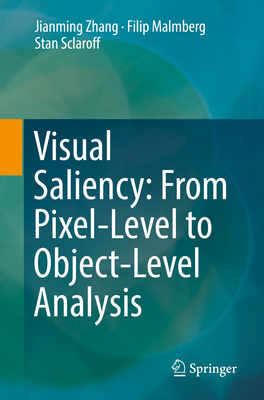Visual Saliency: From Pixel-Level to Object-Level Analysis
暫譯: 視覺顯著性:從像素級到物件級的分析
Zhang, Jianming, Malmberg, Filip, Sclaroff, Stan
- 出版商: Springer
- 出版日期: 2019-02-02
- 售價: $2,550
- 貴賓價: 9.5 折 $2,423
- 語言: 英文
- 頁數: 138
- 裝訂: Quality Paper - also called trade paper
- ISBN: 3030048306
- ISBN-13: 9783030048303
-
相關分類:
影像辨識 Image-recognition
海外代購書籍(需單獨結帳)
相關主題
商品描述
In this book, the authors present methods for both traditional and emerging saliency computation tasks, ranging from classical low-level tasks like pixel-level saliency detection to object-level tasks such as subitizing and salient object detection. For low-level tasks, the authors focus on pixel-level image processing approaches based on efficient distance transform. For object-level tasks, the authors propose data-driven methods using deep convolutional neural networks. The book includes both empirical and theoretical studies, together with implementation details of the proposed methods. Below are the key features for different types of readers.
For computer vision and image processing practitioners:
Efficient algorithms based on image distance transforms for two pixel-level saliency tasks;
Promising deep learning techniques for two novel object-level saliency tasks;
- Deep neural network model pre-training with synthetic data;
Thorough deep model analysis including useful visualization techniques and generalization tests;
Fully reproducible with code, models and datasets available.
For researchers interested in the intersection between digital topological theories and computer vision problems:
Summary of theoretic findings and analysis of Boolean map distance;
Theoretic algorithmic analysis;
- Applications in salient object detection and eye fixation prediction.
Students majoring in image processing, machine learning and computer vision:
This book provides up-to-date supplementary reading material for course topics like connectivity based image processing, deep learning for image processing;
Some easy-to-implement algorithms for course projects with data provided (as links in the book);
Hands-on programming exercises in digital topology and deep learning.
商品描述(中文翻譯)
本書將介紹布林地圖距離在影像處理方面的最新理論、演算法和應用進展。應用範圍包括建模人類在影像中所認為的顯著或突出的部分,並利用這些資訊來指導智能影像裁剪、選擇性影像過濾、影像分割、影像合成等。
在本書中,作者提出了傳統與新興顯著性計算任務的方法,涵蓋從經典的低階任務(如像素級顯著性檢測)到物件級任務(如瞬時計數和顯著物件檢測)。對於低階任務,作者專注於基於高效距離轉換的像素級影像處理方法。對於物件級任務,作者提出了使用深度卷積神經網絡的數據驅動方法。本書包含了實證和理論研究,以及所提方法的實作細節。以下是針對不同類型讀者的主要特點。
對於計算機視覺和影像處理從業者:
- 基於影像距離轉換的兩個像素級顯著性任務的高效演算法;
- 針對兩個新穎物件級顯著性任務的有前景的深度學習技術;
- 使用合成數據進行深度神經網絡模型的預訓練;
- 徹底的深度模型分析,包括有用的可視化技術和泛化測試;
- 提供完整的可重現性,並附有代碼、模型和數據集。
對於對數位拓撲理論與計算機視覺問題交集感興趣的研究者:
- 布林地圖距離的理論發現和分析摘要;
- 理論演算法分析;
- 在顯著物件檢測和眼動預測中的應用。
對於主修影像處理、機器學習和計算機視覺的學生:
- 本書提供最新的補充閱讀材料,涵蓋連通性基礎的影像處理、影像處理的深度學習等課程主題;
- 一些易於實作的演算法,供課程專案使用(書中提供數據連結);
- 在數位拓撲和深度學習中的實作編程練習。











